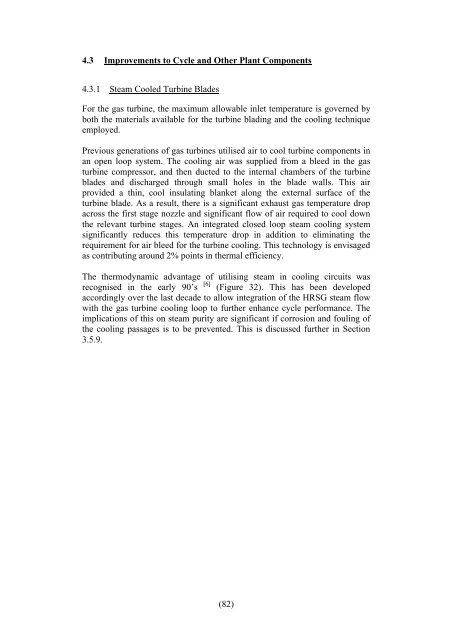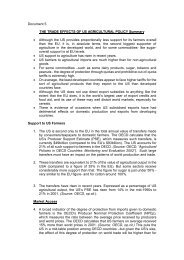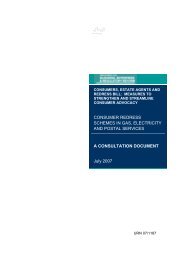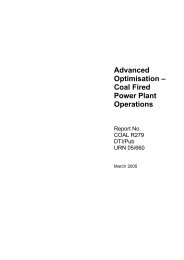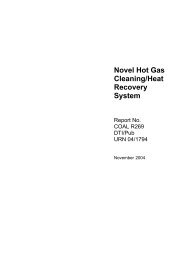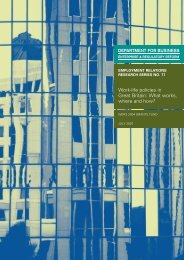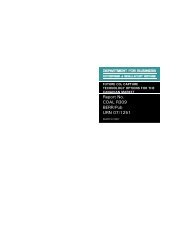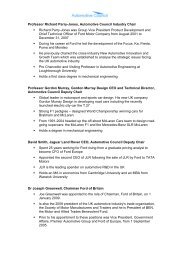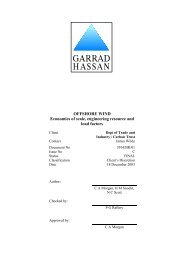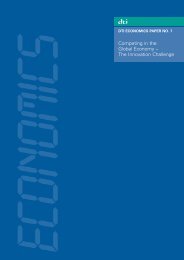(70) Therefore, the risk of sulphuric acid dew point attack ... - DTI Home
(70) Therefore, the risk of sulphuric acid dew point attack ... - DTI Home
(70) Therefore, the risk of sulphuric acid dew point attack ... - DTI Home
Create successful ePaper yourself
Turn your PDF publications into a flip-book with our unique Google optimized e-Paper software.
4.3 Improvements to Cycle and O<strong>the</strong>r Plant Components<br />
4.3.1 Steam Cooled Turbine Blades<br />
For <strong>the</strong> gas turbine, <strong>the</strong> maximum allowable inlet temperature is governed by<br />
both <strong>the</strong> materials available for <strong>the</strong> turbine blading and <strong>the</strong> cooling technique<br />
employed.<br />
Previous generations <strong>of</strong> gas turbines utilised air to cool turbine components in<br />
an open loop system. The cooling air was supplied from a bleed in <strong>the</strong> gas<br />
turbine compressor, and <strong>the</strong>n ducted to <strong>the</strong> internal chambers <strong>of</strong> <strong>the</strong> turbine<br />
blades and discharged through small holes in <strong>the</strong> blade walls. This air<br />
provided a thin, cool insulating blanket along <strong>the</strong> external surface <strong>of</strong> <strong>the</strong><br />
turbine blade. As a result, <strong>the</strong>re is a significant exhaust gas temperature drop<br />
across <strong>the</strong> first stage nozzle and significant flow <strong>of</strong> air required to cool down<br />
<strong>the</strong> relevant turbine stages. An integrated closed loop steam cooling system<br />
significantly reduces this temperature drop in addition to eliminating <strong>the</strong><br />
requirement for air bleed for <strong>the</strong> turbine cooling. This technology is envisaged<br />
as contributing around 2% <strong>point</strong>s in <strong>the</strong>rmal efficiency.<br />
The <strong>the</strong>rmodynamic advantage <strong>of</strong> utilising steam in cooling circuits was<br />
recognised in <strong>the</strong> early 90’s [6] (Figure 32). This has been developed<br />
accordingly over <strong>the</strong> last decade to allow integration <strong>of</strong> <strong>the</strong> HRSG steam flow<br />
with <strong>the</strong> gas turbine cooling loop to fur<strong>the</strong>r enhance cycle performance. The<br />
implications <strong>of</strong> this on steam purity are significant if corrosion and fouling <strong>of</strong><br />
<strong>the</strong> cooling passages is to be prevented. This is discussed fur<strong>the</strong>r in Section<br />
3.5.9.<br />
(82)


